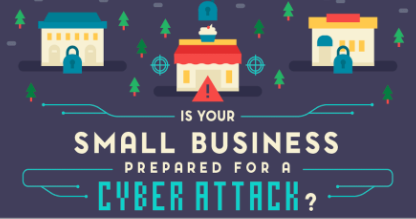Common Small Business Cyber Attacks

By Debbie Gregory.
Let us begin with a frightening statistic! Do you know that every three- and one-half seconds brand new cybersecurity threats arise? Small businesses are typically the targets for these threats as they typically do not have strong cybersecurity practices. This article will review where the most common threats come from so you can be forewarned and forearmed.
1.) Passwords:
A hacker with your password can access any of your private information and data. Hackers learn these passwords in a variety of ways. The most common way is called a “brute force attack.” These types of attacks utilize specially designed bot programs that generate and try every possible combination of letters, symbols, and numbers out there to obtain your information.
How can you protect against this type of attack?
Creating and using a unique password of upper and lowercase letters that is at least ten characters long can substantially slow down these brute force program attacks. It can take them years to find your password if it is more complex. It is also important that you do not use the same password over and over and you frequently change your passwords.
2.) Phishing
Phishing is a technique used to trick people into willingly handing over their information to a hacker. These types of attacks target all types of personal data including, but not limited to passwords, bank account numbers, credit card numbers, Social Security numbers, and more.
How are these types of attacks performed?
Usually a hacker will pose as a reputable source asking their victim to allow them access to their computer or to click a specific link. They impress upon their victims that the reason for doing so is incredibly important and they must provide key personal information. These types of attacks happen via phone, email, and text message. Often, they have what appears to be a legitimate email address but when you really look at it, you will see they are not who they pretend to be. Be on the alert and never ever click on a link or open a document from someone you do not know or a generic email address because they are after your personal information.
3.) Pharming:
Pharming is the term for website spoofing. In this type of attack, the hacker has compromised the naming system in the website’s server so that a visitor to the legitimate site is instead redirected to a fraudulent one. Once on the fraudulent site, the victim is prompted to provide their sensitive data, such as a credit card number or Social Security number.
4.) Malware
Malware is malicious software that is specifically designed to gain access to or to cause damage to a device. The goal is usually stealing personal data such as passwords, bank account numbers, credit card numbers, Social Security numbers, and more. Malware comes in many forms from adware to spyware to Trojan horses. All are extremely dangerous.
These are only a few of the potential risks your business faces. Other common attacks include point-of-sale hacks, drive-by-downloads, and ones that are so new they haven’t even been named yet. The best thing you can do is to take the time and effort to create and enforce strong cybersecurity policies. Stay on top of what is happening in the world of cybersecurity and help protect yourself, your employees, and your business.










